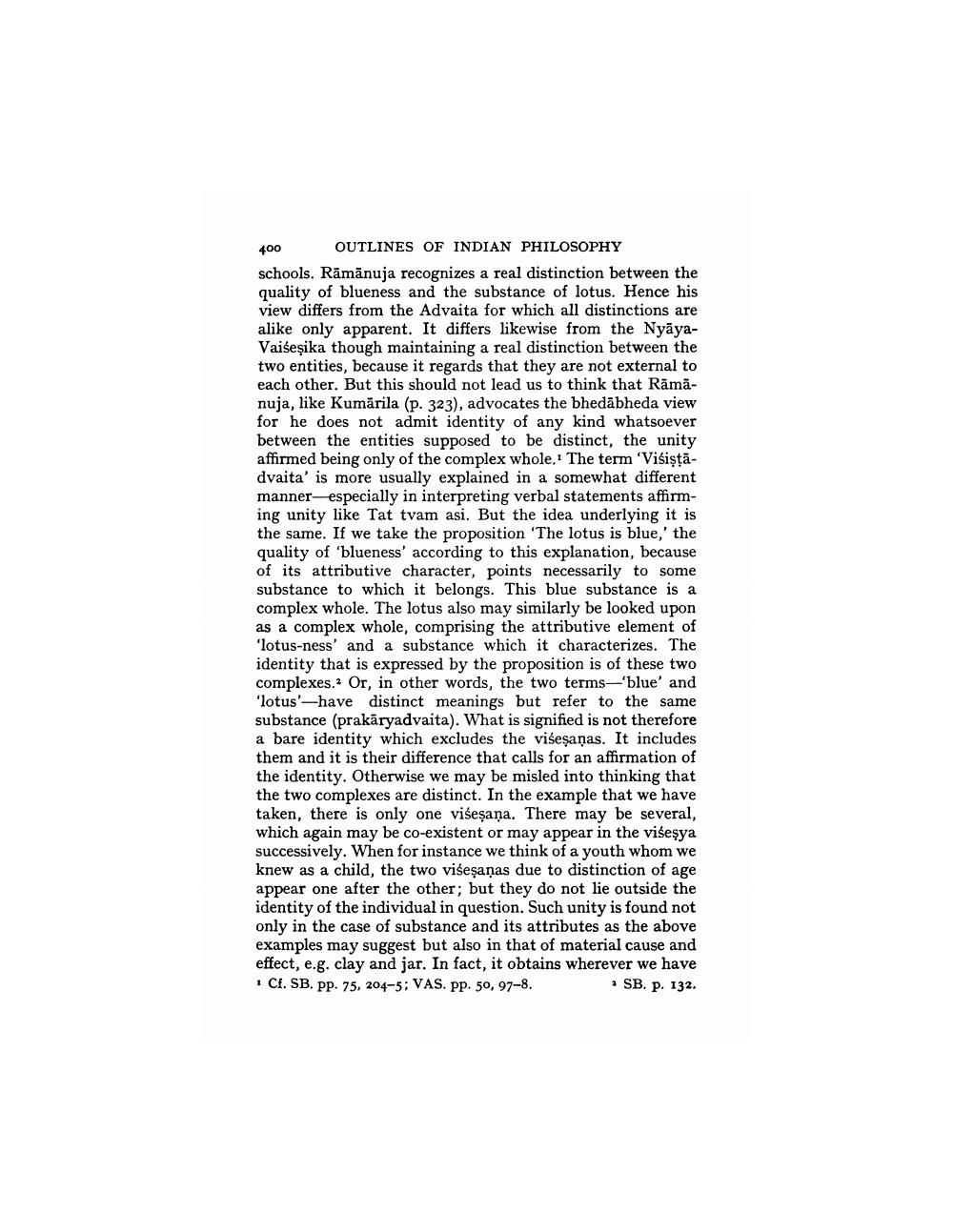________________
400
OUTLINES OF INDIAN PHILOSOPHY
schools. Rāmānuja recognizes a real distinction between the quality of blueness and the substance of lotus. Hence his view differs from the Advaita for which all distinctions are alike only apparent. It differs likewise from the NyāyaVaiseṣika though maintaining a real distinction between the two entities, because it regards that they are not external to each other. But this should not lead us to think that Rāmānuja, like Kumārila (p. 323), advocates the bhedabheda view for he does not admit identity of any kind whatsoever between the entities supposed to be distinct, the unity affirmed being only of the complex whole. The term 'Visiṣṭādvaita' is more usually explained in a somewhat different manner especially in interpreting verbal statements affirming unity like Tat tvam asi. But the idea underlying it is the same. If we take the proposition 'The lotus is blue,' the quality of 'blueness' according to this explanation, because of its attributive character, points necessarily to some substance to which it belongs. This blue substance is a complex whole. The lotus also may similarly be looked upon as a complex whole, comprising the attributive element of 'lotus-ness' and a substance which it characterizes. The identity that is expressed by the proposition is of these two complexes. Or, in other words, the two terms-'blue' and 'lotus' have distinct meanings but refer to the same substance (prakaryadvaita). What is signified is not therefore a bare identity which excludes the viśeşaņas. It includes them and it is their difference that calls for an affirmation of the identity. Otherwise we may be misled into thinking that the two complexes are distinct. In the example that we have taken, there is only one viseṣaṇa. There may be several, which again may be co-existent or may appear in the viseşya successively. When for instance we think of a youth whom we knew as a child, the two višeṣaṇas due to distinction of age appear one after the other; but they do not lie outside the identity of the individual in question. Such unity is found not only in the case of substance and its attributes as the above examples may suggest but also in that of material cause and effect, e.g. clay and jar. In fact, it obtains wherever we have 1 Cf. SB. pp. 75, 204-5; VAS. pp. 50, 97-8. a SB. p. 132.




